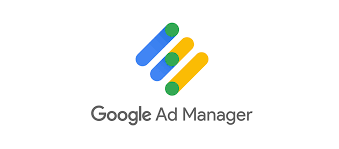In the ever-evolving world of digital advertising, having full control over your ad inventory and monetization strategy is essential — especially for high-traffic websites and media publishers. That’s where Google Ad Manager (also known as AdX) comes into play.
In this blog, we’ll explore what Google Ad Manager is, how it differs from AdSense, and how it empowers publishers to earn more through smarter ad management.
✅ What is Google Ad Manager (AdX)?
Google Ad Manager is a powerful ad management platform designed for advanced publishers who want to monetize their websites, apps, or video content using direct deals and real-time programmatic advertising.
Unlike Google AdSense — which is designed for beginners — Ad Manager is used by professional publishers who need deeper control, optimization, and access to premium demand sources.
In short:
AdSense is plug-and-play. Ad Manager is pro-level.
🔍 Key Features of Google Ad Manager
- Unified Ad Management
Manage direct-sold campaigns, programmatic deals, and AdSense in one place. - Access to Google Ad Exchange (AdX)
AdX gives you access to premium programmatic buyers and real-time bidding (RTB), resulting in better competition and higher CPMs. - Advanced Targeting & Reporting
Target users by geography, device, browser, content, and more. Track everything with detailed performance reports. - Ad Inventory Rules
Set custom rules for frequency capping, ad placement, blocking sensitive categories, etc. - Header Bidding Integration
Seamlessly work with header bidding partners for even more revenue opportunities.
💰 Why Use Google Ad Manager Instead of AdSense?
| Feature | AdSense | Google Ad Manager (AdX) |
|---|---|---|
| Setup | Simple | Complex (needs expertise) |
| Revenue Potential | Moderate | High (premium demand, RTB) |
| Control | Limited | Full control over inventory & pricing |
| Best For | Bloggers, small websites | Publishers, news/media sites, apps |
If you’re managing a high-traffic site or a content network, switching to Ad Manager can significantly increase your fill rates, CPMs, and overall revenue.
🧠 Who Should Use Google Ad Manager?
- News & Media Websites
- Mobile App Publishers
- Video Content Creators
- Large Blogs or Niche Networks
- Agencies Managing Multiple Clients
If you generate over 500,000 monthly pageviews, you’re likely ready to graduate from AdSense to AdX.
🚀 Benefits of Using Google Ad Manager (AdX)
- Monetize with both direct deals and programmatic demand
- Get better competition and higher earnings through real-time bidding
- Maintain control over ad quality and user experience
- Optimize performance with A/B testing and advanced analytics
- Integrate with third-party SSPs and demand partners
🧩 Getting Started with Google Ad Manager
Setting up Google Ad Manager requires technical know-how, but many publishers work with Google Certified Publishing Partners to access and manage AdX accounts.
You’ll need to:
- Apply for a Google Ad Manager account
- Get approved and integrate it with your site or app
- Set up ad units, placements, and yield groups
- Monitor, optimize, and scale
⚠️ Important Tips
- Ensure your site follows Google’s publisher policies
- Avoid aggressive ads or clickbait content
- Optimize for site speed and mobile responsiveness
- Use responsive ad units and native formats for better UX
📝 Final Thoughts
If you’re serious about ad monetization and want access to the highest-paying advertisers, Google Ad Manager is the tool you need. It may have a learning curve, but the results — better control, smarter optimization, and higher revenue — are worth it.
Whether you’re running a content-heavy platform, a media site, or an app, Google Ad Manager gives you the flexibility and power to scale your digital advertising like a pro.

No responses yet